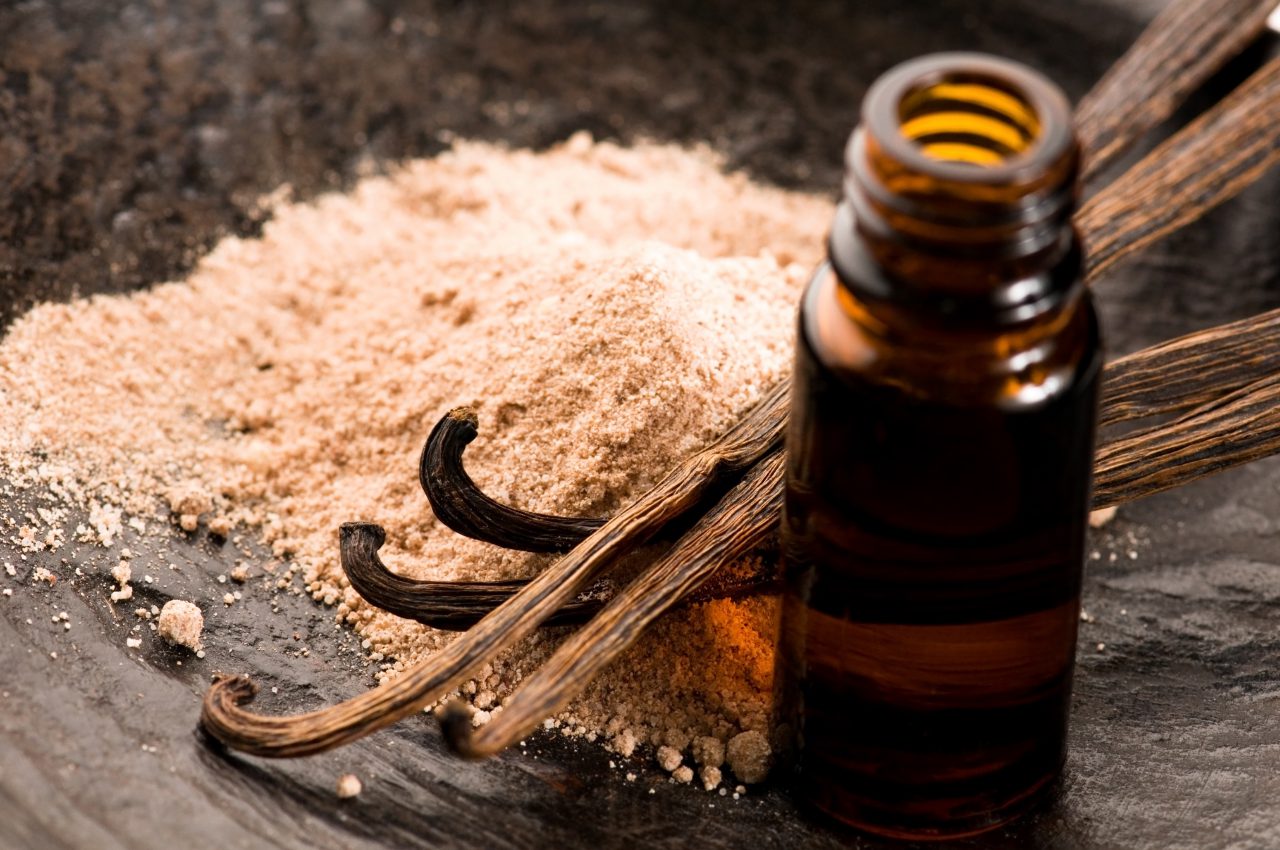I have just finished making a gallon of vanilla extract—yes, you read that right. Every fall, as soon as the leaves turn and the nights get cooler, my attention turns to making vanilla extract. I have three reasons for making vanilla extract: The baking season is about to descend upon us, homemade vanilla extract tastes so much better than commercial ones and it makes a great gift during the holiday season.
Vanilla itself is quite interesting. The vanilla orchid, Vanilla planifolia, produces the pods. Originating in Mexico, this orchid is actually a large vine that now grows in the 20° band around the equator. The Aztecs took over control of growing of this orchid from the Totonac Indians and were responsible for introducing it to Cortez who subsequently returned to Spain with both tomatoes and vanilla beans in hand.
For the next three centuries Mexico was the sole producer of vanilla beans, all due to the tiny Melipone bee who was responsible for the pollination of the orchid flowers—without pollination there could be no beans. The vanilla orchid could be grown in other parts of the world but it turned out that the Melipone bee was not a happy traveller outside of Mexico.
The Bourbon Islands consists of Madagascar, Réunion, Mauritius, Comoro, and the Seychelles. In 1773, a vanilla orchid vine, smuggled out of Mexico, was planted in Runion—but it could not produce the desired beans without the Melipone bee. Amazingly, the link between bee and orchid wasn’t made until 1836 when it clicked with a Belgian botanist that the bee was responsible for pollination. From this knowledge Edmond Albius of Réunion proved that hand pollination could be as effective as the Melipone bee.
The vines are at least three years old before they produce the flowers, which are hermaphroditic: They contain both the anther and the stigma, which are separated by a membrane. By folding back the membrane and pressing the sigma and the anther together, self-pollination occurs. This is no mean feat as the vines are quite large and the flower lasts for only one day so timing is of the essence.
The beans will remain on the vine for nine months and will gradually turn from green to a yellow in color. They have no aroma or flavor at this point and must be cured—it is only after curing, when the beans are only 20% of their original size that the beans take on that familiar vanilla fragrance.
Curing involves several different methods. In Mexico workers wrap the beans in blankets after giving them a bath in warm water in an effort to keep the beans pliable. They will then spend the next 3-6 month period sunbathing in the sun and sweating in wooden crates at night. All told, it will take approximately nine months before the bean looks and smells the way we know it.
Tahitian vanilla beans are a bit different in that these beans come from Vanilla tahitensis, a hybrid of Vanilla aromatic and Vanilla fragrans. Instead of giving the beans an initial warm bath, Tahitians place the beans in a cool place where they will turn brown over a ten-day period. They then go through the sunbathing-sweating cycle before spending 40 days in a cool, ventilated storage space.
Madagascar has a rich soil, suitable for growing the vanilla orchids. By hand-pollinating the flowers and by spacing the vanilla orchids evenly apart, Madagascar soon became a producer of superior beans. Today, 90% of the world’s vanilla beans come from Madagascar and Indonesia but while Madagascar beans are considered superior, Indonesian beans should be avoided, due to indifferent curing practices. Along with Tahiti and India, Mexico produces a tiny fraction of the beans. Today other countries are taking up the vanilla mantle so Costa Rica, China, and Uganda are now producing beans, although the best are from Madagascar and Uganda—if you can get your hands on Uganda gold beans, don’t hesitate to pick them. Tahitian beans have a slightly different taste but should be given a try.
To make vanilla extract: Beans may be bought in bulk online. Slit the beans, thereby exposing the flavorful insides and fill suitable glass bottles—I found ones with china tops attached online. Approximately one-quarter pound of beans are enough for three quart size bottles. Then fill the bottles with vodka: This doesn’t have to be the best, most refined vodka but it shouldn’t be rotgut vodka either. The vodka will quickly take on the brown color of the beans. Shake the bottles occasionally and in three months you will have delicious vanilla extract for those brownies you like to make. The extract only gets better and better so leave the beans in the bottles.









